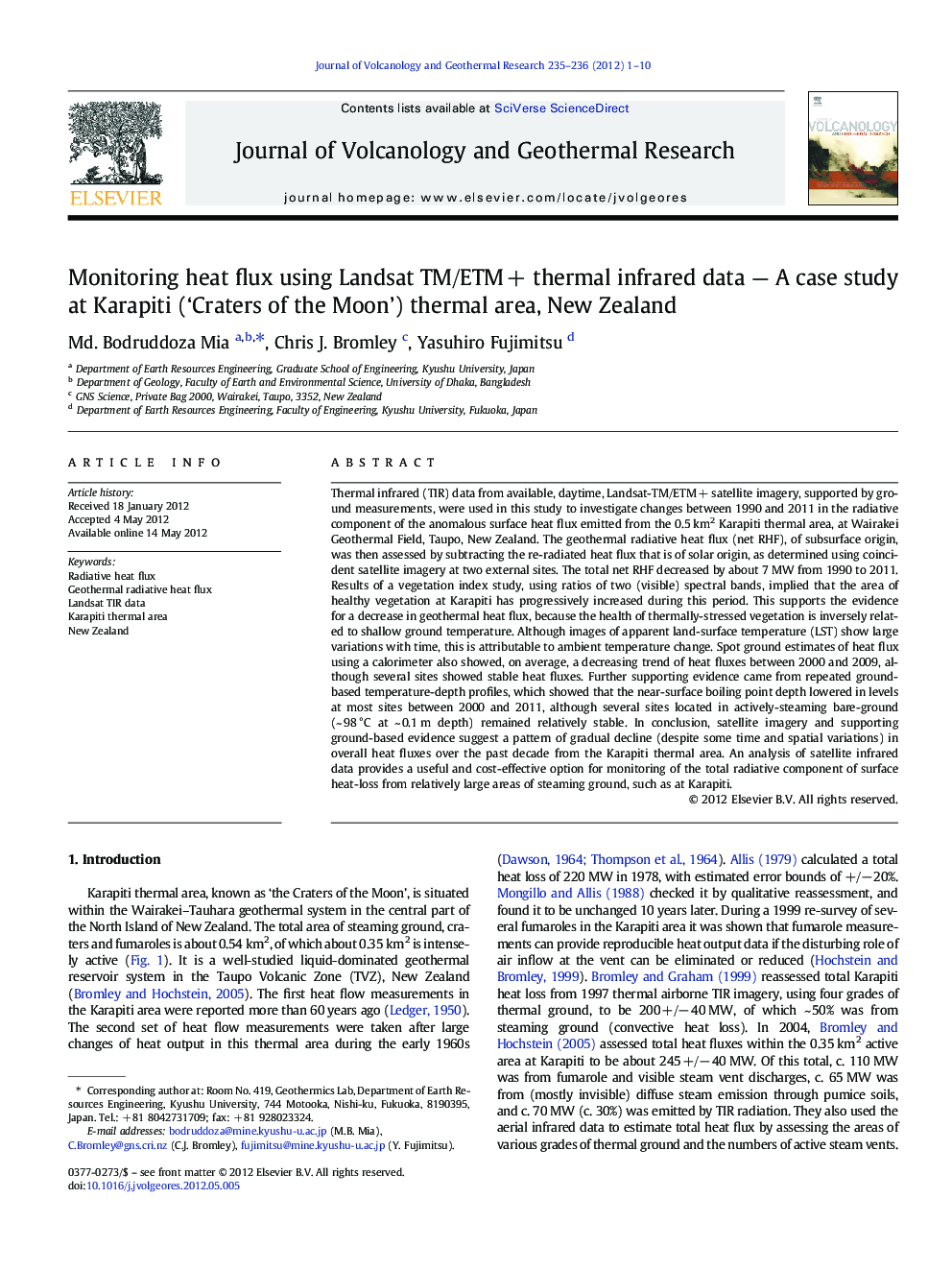| کد مقاله | کد نشریه | سال انتشار | مقاله انگلیسی | نسخه تمام متن |
|---|---|---|---|---|
| 4713724 | 1638379 | 2012 | 10 صفحه PDF | دانلود رایگان |

Thermal infrared (TIR) data from available, daytime, Landsat-TM/ETM + satellite imagery, supported by ground measurements, were used in this study to investigate changes between 1990 and 2011 in the radiative component of the anomalous surface heat flux emitted from the 0.5 km2 Karapiti thermal area, at Wairakei Geothermal Field, Taupo, New Zealand. The geothermal radiative heat flux (net RHF), of subsurface origin, was then assessed by subtracting the re-radiated heat flux that is of solar origin, as determined using coincident satellite imagery at two external sites. The total net RHF decreased by about 7 MW from 1990 to 2011. Results of a vegetation index study, using ratios of two (visible) spectral bands, implied that the area of healthy vegetation at Karapiti has progressively increased during this period. This supports the evidence for a decrease in geothermal heat flux, because the health of thermally-stressed vegetation is inversely related to shallow ground temperature. Although images of apparent land-surface temperature (LST) show large variations with time, this is attributable to ambient temperature change. Spot ground estimates of heat flux using a calorimeter also showed, on average, a decreasing trend of heat fluxes between 2000 and 2009, although several sites showed stable heat fluxes. Further supporting evidence came from repeated ground-based temperature-depth profiles, which showed that the near-surface boiling point depth lowered in levels at most sites between 2000 and 2011, although several sites located in actively-steaming bare-ground (~ 98 °C at ~ 0.1 m depth) remained relatively stable. In conclusion, satellite imagery and supporting ground-based evidence suggest a pattern of gradual decline (despite some time and spatial variations) in overall heat fluxes over the past decade from the Karapiti thermal area. An analysis of satellite infrared data provides a useful and cost-effective option for monitoring of the total radiative component of surface heat-loss from relatively large areas of steaming ground, such as at Karapiti.
► Total radiative heat flux has reduced about 11 MW from 2000 to 2011.
► Net radiative heat flux showed a gradual decline of about 7 MW from 1990 to 2011.
► To increase vegetated area is a consequence of decreasing net radiative heat flux.
► Repeated ground-based total heat fluxes, at most sites, showed a declining trend.
► Levels of the boiling point depth in the soil were reduced between 2000 and 2010.
Journal: Journal of Volcanology and Geothermal Research - Volumes 235–236, 1 August 2012, Pages 1–10